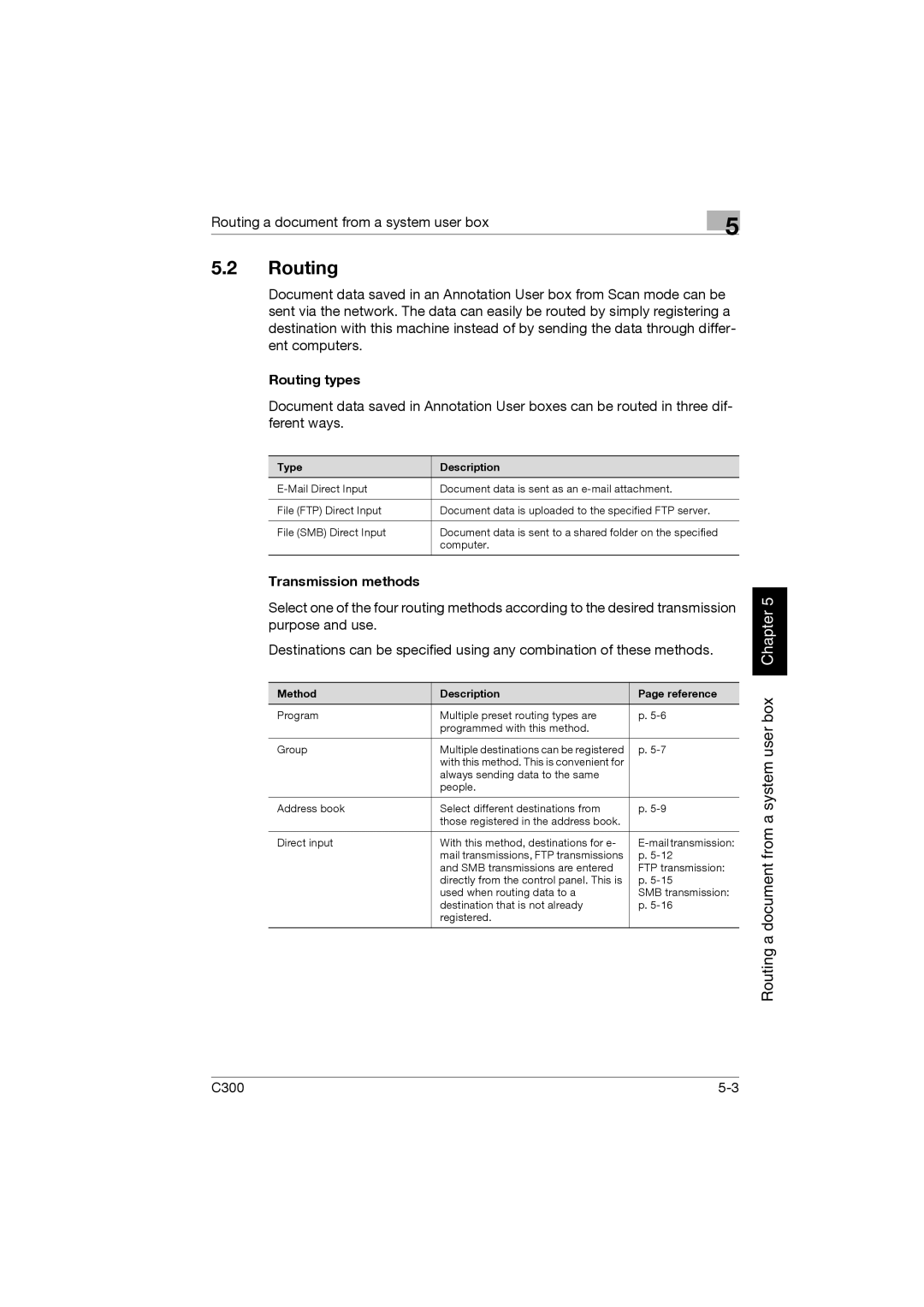
Routing a document from a system user box | 5 |
|
5.2Routing
Document data saved in an Annotation User box from Scan mode can be sent via the network. The data can easily be routed by simply registering a destination with this machine instead of by sending the data through differ- ent computers.
Routing types
Document data saved in Annotation User boxes can be routed in three dif- ferent ways.
Type | Description |
Document data is sent as an | |
|
|
File (FTP) Direct Input | Document data is uploaded to the specified FTP server. |
|
|
File (SMB) Direct Input | Document data is sent to a shared folder on the specified |
| computer. |
|
|
Transmission methods
Select one of the four routing methods according to the desired transmission purpose and use.
Destinations can be specified using any combination of these methods.
Method | Description | Page reference |
Program | Multiple preset routing types are | p. |
| programmed with this method. |
|
|
|
|
Group | Multiple destinations can be registered | p. |
| with this method. This is convenient for |
|
| always sending data to the same |
|
| people. |
|
|
|
|
Address book | Select different destinations from | p. |
| those registered in the address book. |
|
|
|
|
Direct input | With this method, destinations for e- | |
| mail transmissions, FTP transmissions | p. |
| and SMB transmissions are entered | FTP transmission: |
| directly from the control panel. This is | p. |
| used when routing data to a | SMB transmission: |
| destination that is not already | p. |
| registered. |
|
|
|
|
Routing a document from a system user box Chapter 5
C300 |
